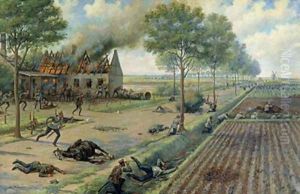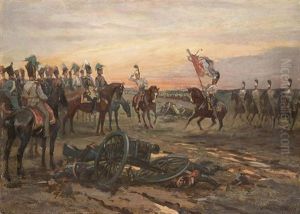Viktor Viketyevich Masurovsky Paintings
Viktor Vasilyevich Masurovsky was a Russian artist known for his work in stage design, painting, and graphic arts. Born on May 21, 1928, in the city of Kursk, Soviet Union, he grew up in a country undergoing tremendous social and political changes. His interest in art manifested early on, and he pursued his passion despite the challenging circumstances of the time.
Masurovsky began his formal art education at the Kursk Art School and further honed his skills at the prestigious Moscow State Academic Art Institute named after V.I. Surikov, which is part of the Russian Academy of Arts. Throughout his education, he was influenced by the Socialist Realism style, which was the official artistic movement of the Soviet Union and focused on the glorification of communist values and the working class.
After completing his education, Masurovsky embarked on a multifaceted career. He worked extensively in theater and was celebrated for his innovative and evocative stage designs. His work in theater not only showcased his artistic versatility but also his ability to collaborate with directors and actors to bring dramatic works to life visually.
In addition to his stage design, Masurovsky was an accomplished painter and graphic artist. His paintings often depicted scenes of Soviet life, landscapes, and portraits, reflecting the aesthetic and thematic conventions of his time. However, as the political climate in the Soviet Union evolved, so did Masurovsky's art. He began to experiment with more abstract forms and motifs, though he never fully abandoned the representational style.
Masurovsky's contributions to Soviet and Russian art were recognized with various awards and honors, and his works were exhibited both domestically and internationally. Despite the political and cultural shifts that occurred during his lifetime, he remained a respected figure in the art community until his death on May 29, 2009.
Throughout his career, Masurovsky left an indelible mark on the Russian art scene. His legacy is preserved in the collections of numerous museums and galleries, as well as in the memories of those who had the opportunity to witness his art in person. His dedication to his craft and his ability to adapt to changing artistic currents serve as a testament to his talent and resilience as an artist.

